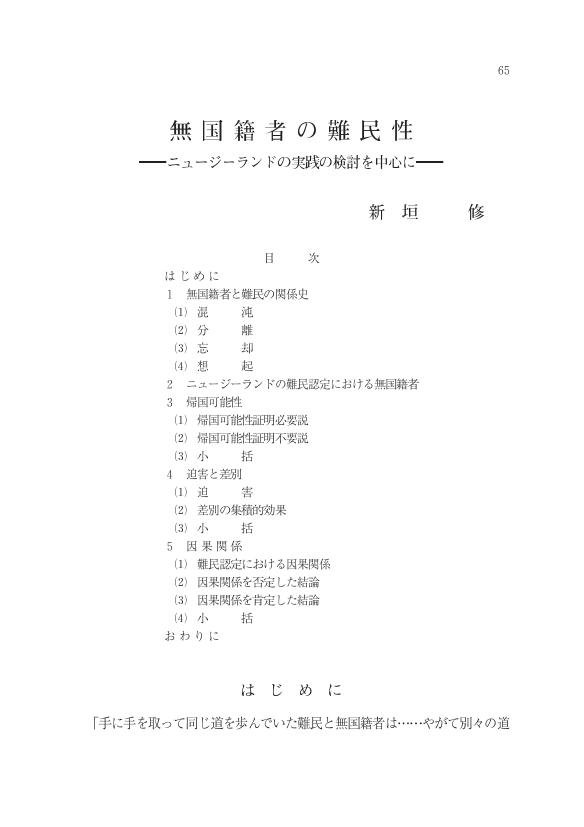1 0 0 0 OA 武力紛争による人の移動と難民レジームの規範
- 著者
- 新垣 修
- 出版者
- 一般財団法人 日本国際政治学会
- 雑誌
- 国際政治 (ISSN:04542215)
- 巻号頁・発行日
- vol.2018, no.190, pp.190_65-190_80, 2018-01-25 (Released:2018-12-19)
- 参考文献数
- 100
Armed conflicts between government forces and other armed groups may become humanitarian disasters. As can be seen in the Syrian Arabic Republic, such conflicts are accompanied by large-scale displacement. How do the norms of the refugee regime deal with people who have escaped armed conflicts? This article offers some insights for exploring them by paying attention to the change and formation of norms in the refugee regime.The first section regards an idea of a new approach to fill the gap between the function of the existing norm in refugee regime and contemporary crises caused by armed conflicts. This idea shows that, if the existing norm is amended, individuals who have fled from armed conflicts can be protected as “refugees” in terms of the 1951 Convention Relating to the Status of Refugees (Refugee Convention). To protect civilians out of their states of origin, this idea proposes the approach to incorporate international humanitarian law (IHL) into the interpretative standards for “refugee” in term of the Refugee Convention.The second section regards an alternative norm of the refugee regime, that is to say, the norm of a temporary refuge. It has been argued that this norm was formed to protect civilian victims such as non-combatants who fled to other states from violence and other forms of threats. One pillar of this argument is that the norm prohibits the repatriation of civilians who crossed a border from a state engaged in armed conflict, where infringements of the principles or rules of IHL frequently occur. It is an intriguing phenomenon that the norm is recently regaining attention at the forums of the United Nations and academia.The third section regards a premise to interpret the language of international law on the norms into the language of international politics. This article explains the principle to restrict access of refugees to the North. This restrictive principle functions to deter the refugee flow from the South.In the final section, this article considers the implications of two norms for refugee regime. Ostensibly, the change and formation of the norms look to extend the scope to protect so that individuals, who flee armed conflict, may be covered. However, it is important to understand how the change and formation of the norms have been promoted in the political context of the asymmetry of power between the North and the South. It is the conclusion of this article that the norms justify the refugee regime to contain people, who are afraid of the tragedy of armed conflict, in the neighboring states and in the South.
1 0 0 0 OA 無国籍者の難民性 ―ニュージーランドの実践の検討を中心に―
- 著者
- 新垣 修
- 出版者
- 世界法学会
- 雑誌
- 世界法年報 (ISSN:09170421)
- 巻号頁・発行日
- vol.31, pp.65-89, 2012-03-28 (Released:2017-11-22)
